Alias Theory Builder
Understanding NURBS
Non-Uniform Rational B-Splines (NURBS) is simply the name for the mathematics that is used to create the geometry in Alias, and in many other CAD systems.
Luckily, no understanding of the math is required to become an expert Alias user. There are a few technical terms that are used for controlling the shapes we design, but they are simply learned as each tool is learned, and don't need to be understood in a mathematical way. (If you are interested however, a useful overview of NURBS modeling and mathematics is given by Stephen M. Hollister.)
The key benefit of NURBS is that it isn't an approximation of a smooth shape. The math calculates an accurate definition of the surface shape which is still smooth however closely the surface is examined.
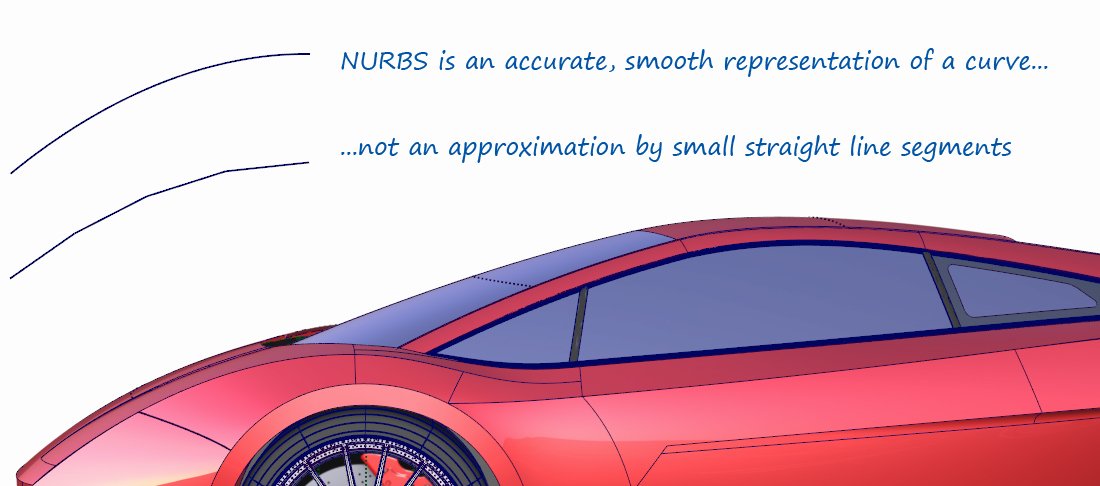
(Note: For speed of interaction, the smooth NURBS curves will be displayed as straight-line approximations on the screen, but the actual underlying math, and the resulting product that is manufactured from the data will be smooth.)
Why NURBS are used
More important than the underlying math is understanding what unique features Alias NURBS have to offer you as a designer, compared to the other software tools you may be using:
- Flexibility to create sculptural shapes
- Tension to keep surfaces smooth and taut
- Alignment to create smooth, invisible joins
Designing with this level of attention to sculptural aesthetics is a specialized area of CAD modeling, typically used for premium products where elegance and surface quality are important factors in the product's appeal.
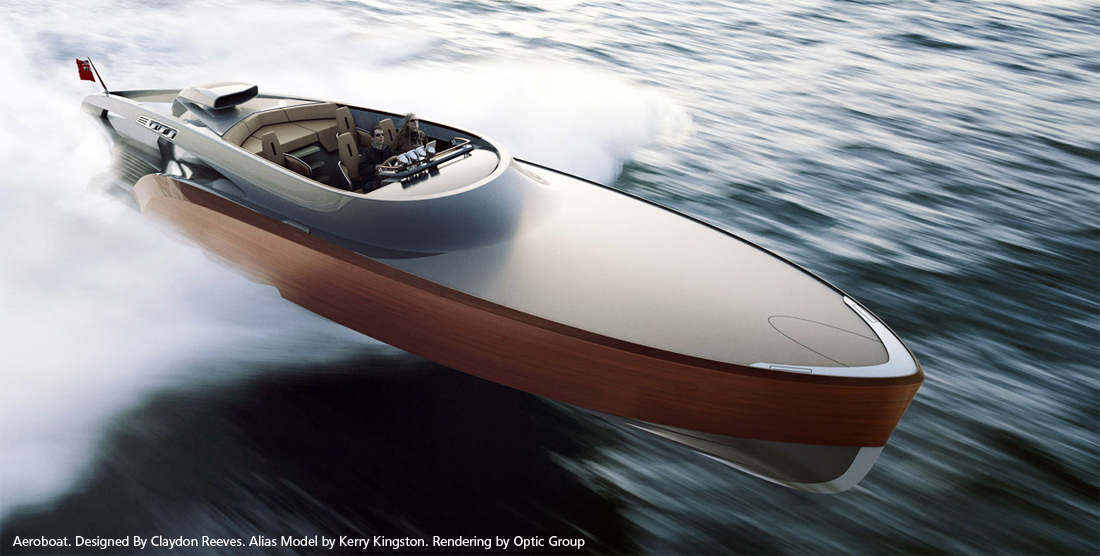
How NURBS are used
A NURBS surface is defined by a network of Control Points. The position of the control points 'pull' the surface patch into a shape, like a flexible sheet.
The key skill that you will develop is choosing the right number of control points, and the right position of each of them to achieve the sculpted surface shape that you need:

The following sections examine how freeform NURBS modeling differs from other CAD and modeling software used for similar tasks.
Comparing Alias NURBS to Engineering CAD software
Most engineering CAD systems use the same NURBS mathematics as Alias does to define the geometry.
This is useful as it makes data transfer between Alias and other CAD systems accurate and complete, without any loss of definition.
However, being based on the same 'material' – NURBS – doesn't mean that the interaction and the results are similar:
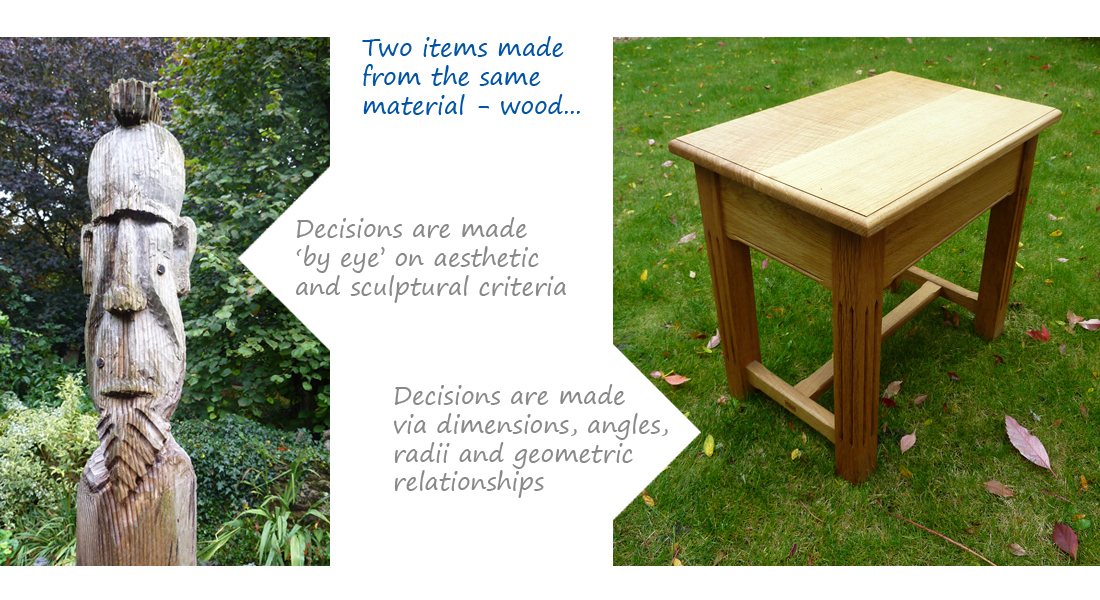
Engineering CAD
Most of the geometry will be defined as recognizable geometric shapes.
- Primary Interaction: geometric and dimensional criteria – arcs, ellipses, straight lines, angles.
- Secondary Interaction: freeform shape creation using splines, often this is also controlled through dimensions and XYZ positions.
Alias NURBS
Alias NURBS allows the user to sculpt any shape, and is typically used for freeform, sculptural designs that can't be defined by dimensions or geometry.
- Primary Interaction: aesthetic, artistic, sculptural choices of shape and form.
- Secondary Interaction: geometric and dimensional criteria – arcs, ellipses, straight lines, angles.
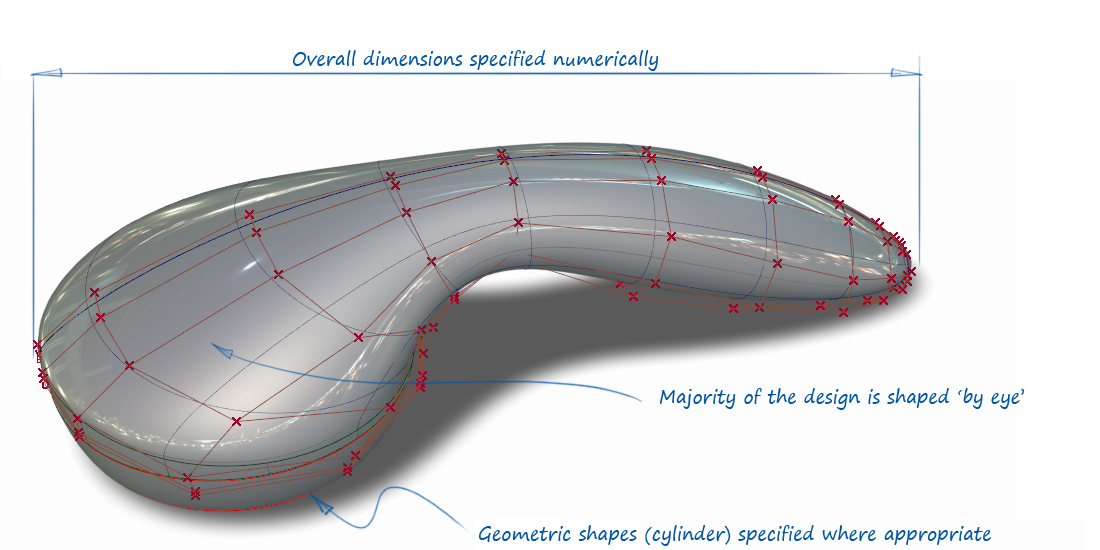
Comparing Alias NURBS to Polygon Modeling
NURBS and polygon models are typically both used to create freeform designs, but are based on completely different representations of the geometry, and therefore have different methods of controlling the flexibility of the design.
Polygon Modeling
Polygon modeling has traditionally been used in Character Animation modeling and Games modeling as it is particularly good at:
- Creating surface detail (wrinkles in a character's face, vegetation, rocks)
- Fast rendering calculations (polygon models are already tessellated)
Polygon modeling is generally seen as easier to learn and easier to use than NURBS modeling, and because of this, it is beginning to be used more for concept design work.
Alias NURBS compared to Polygon Modeling
Polygon modeling is not used for production quality final designs because of the lack of surface smoothness.
A polygon model is a collection of flat facets that approximate a smooth shape. This is adequate for rendering or prototyping (and in fact NURBS models are converted to a polygon representation for these purposes), but not for production.
The CNC machine tools that create the tooling for final products work from the accurate, smooth NURBS data.
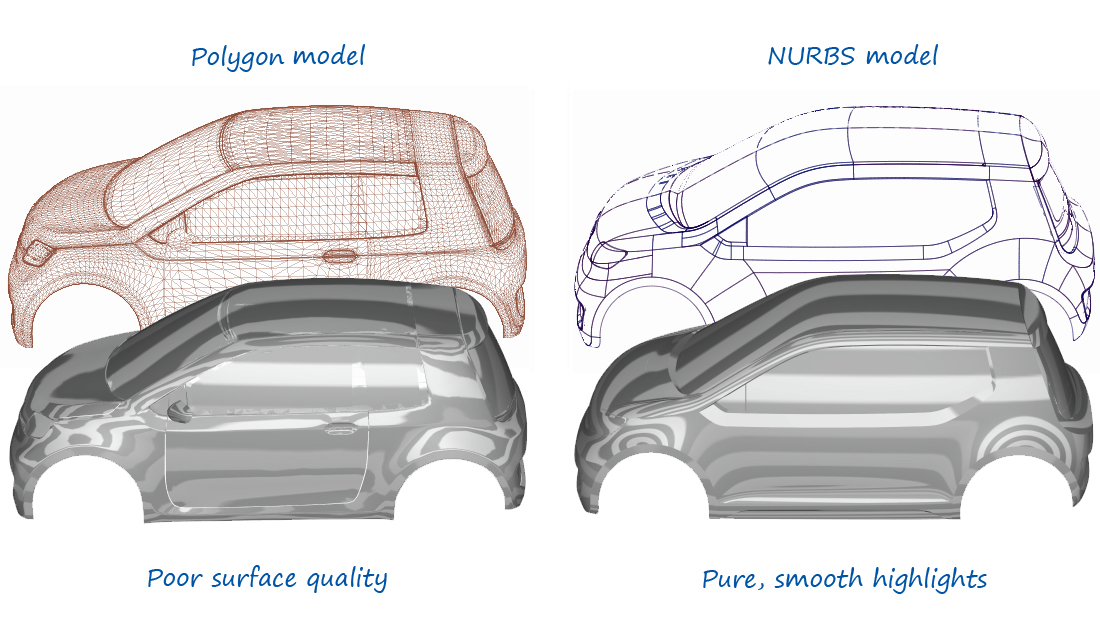
Comparing Traditional Modeling to NURBS Modeling
A useful way to understand how the NURBS geometry works (without needing to understand the math) is to compare it to the traditional way of creating large, smooth curves using physical splines:
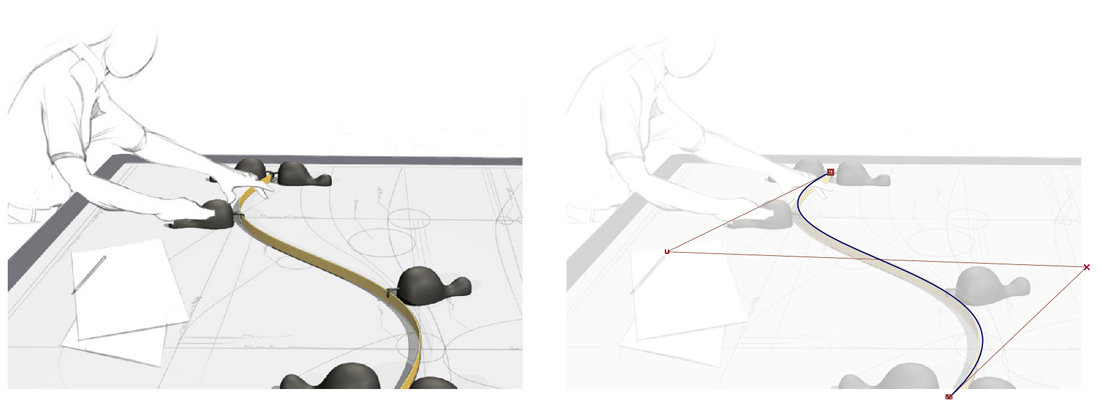
|
Traditional Modeling |
NURBS Modeling |
|
|
Material |
Long, thin pieces of wood, plastic or metal |
Mathematics called NURBS – Non-Uniform Rational B-Splines |
|
Controls |
Heavy metal weights called 'ducks' |
Control Vertices – CVs – also known as Control Points |
|
Flexibility |
Depends on the stiffness of the material |
Depends on the Number of CVs, determined by the Degree and Spans |
|
Smoothness |
Created by the consistent density of the material |
Determined by the Degree and Spans of the NURBS curve |
|
Shape (1) |
Position of the weights along the curve... |
Position of the CVs along the curve... |
|
Shape (2) |
... and by the distance it pulls the curve away from flat |
... and the distance of the CVs away from the curve |
|
Controls connected by... |
No connection |
Lines called Hulls |
The terms shown in this comparison are explained in detail in the next Theory Builder: NURBS 2: Terminology.